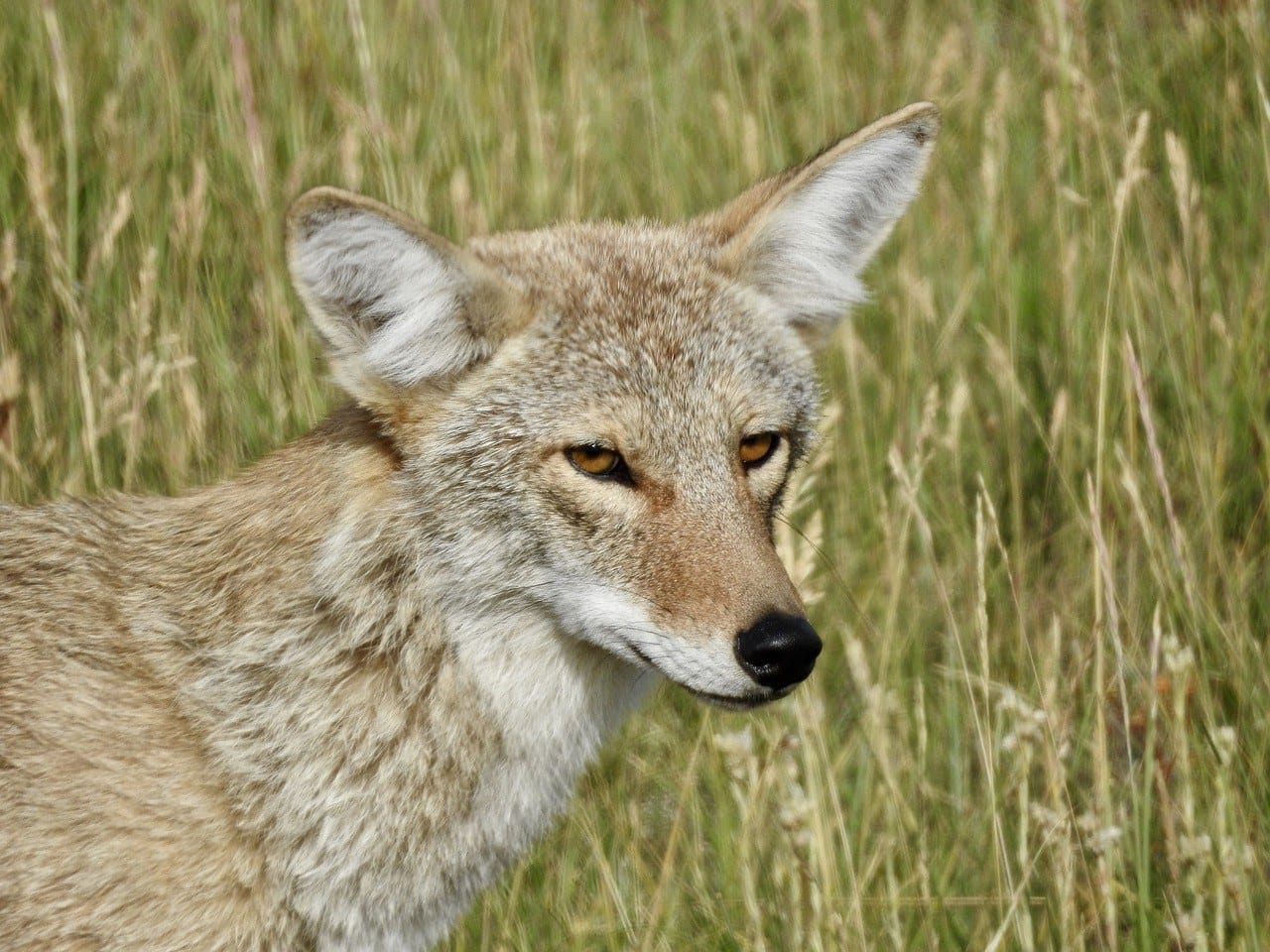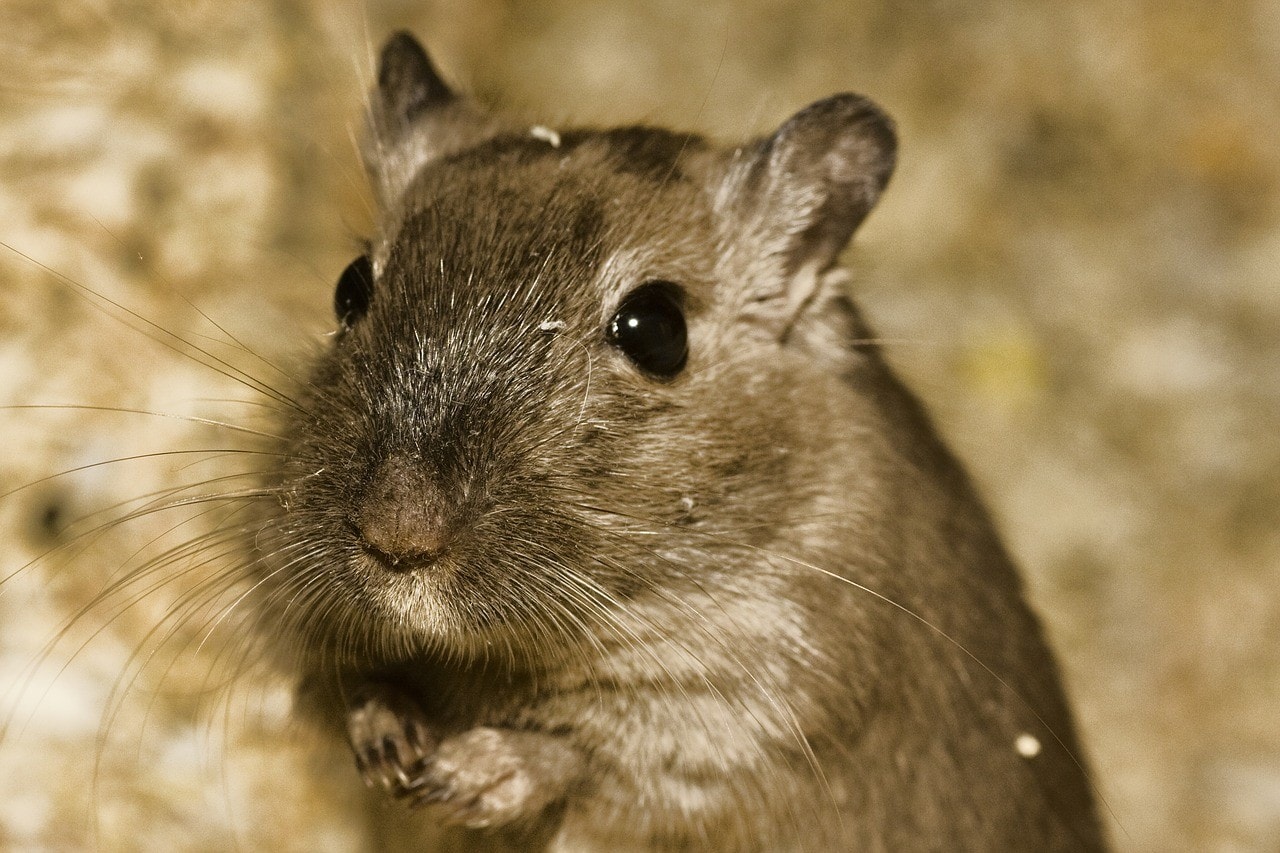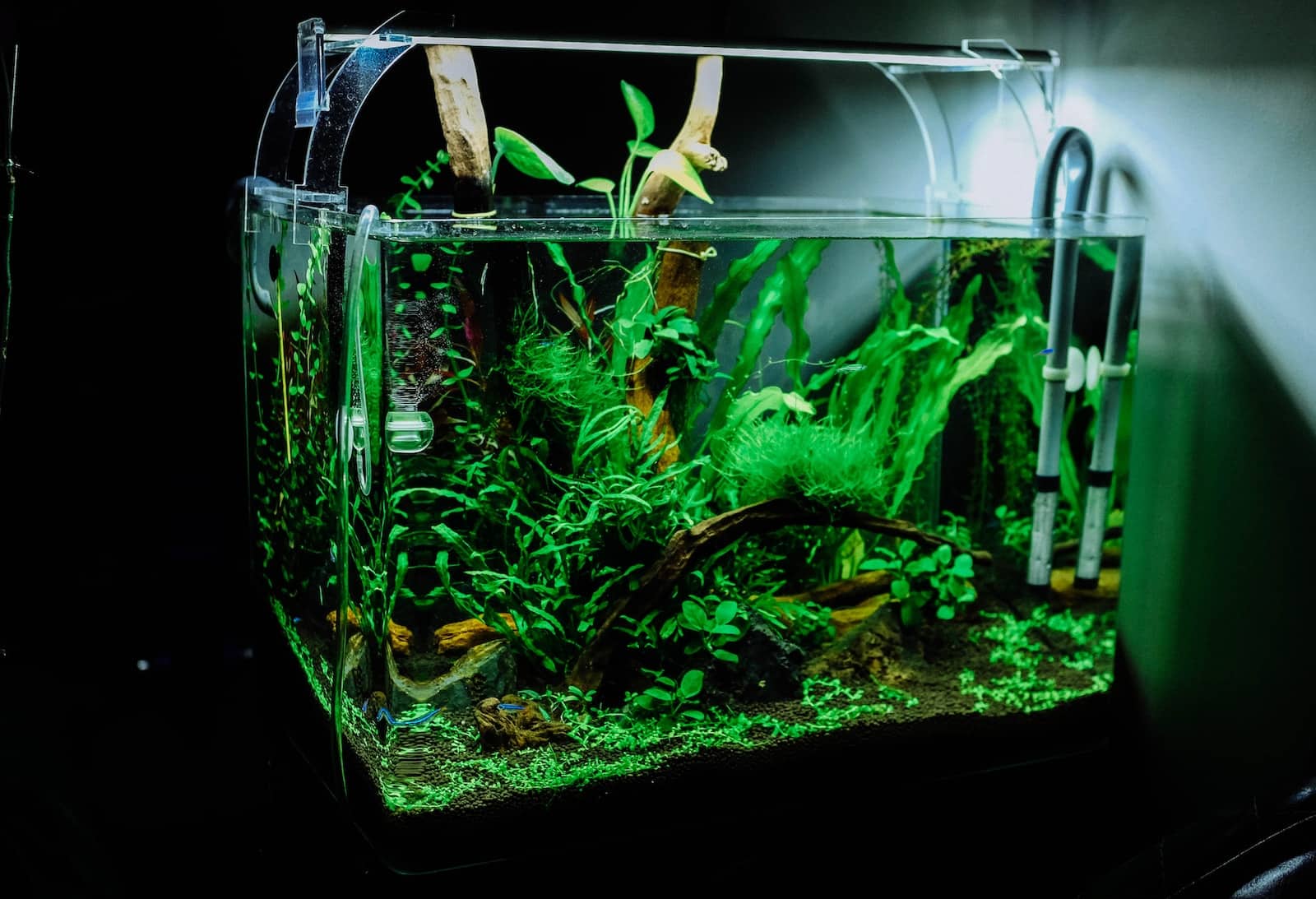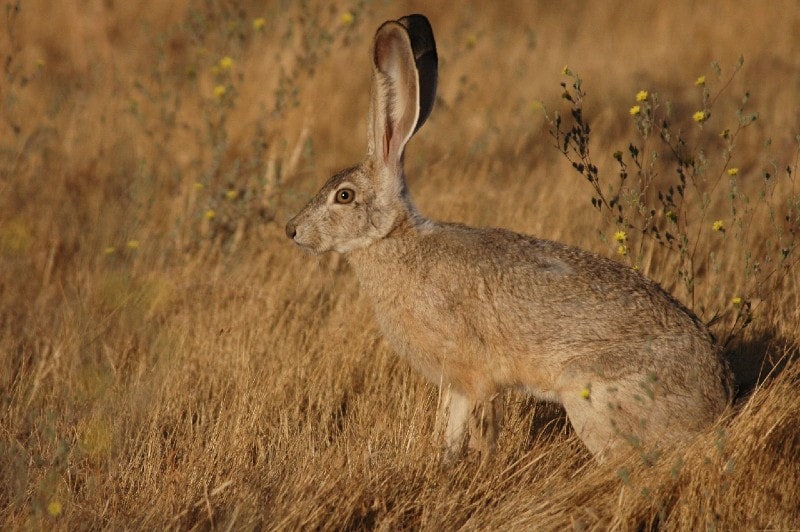VET APPROVED

The information is current and up-to-date in accordance with the latest veterinarian research.
Learn more »Click to Skip Ahead
Just because you don’t see coyotes in your neighborhood, doesn’t mean that they don’t live in local gardens. In fact, research suggests that while coyotes prey on small animals like mice and rats, they will feast on feral and domestic cats when they have the opportunity.
Studies vary dramatically in their findings, with some indicating that an alarmingly high 42% of an urban coyote’s diet is feline, while other studies suggest that the figure is much lower, just 1% or 2%. Regardless of the figures, coyotes are opportunistic feeders and will hunt and eat cats if they are available. Small dogs and puppies are also at risk, although these attacks seem to be less common.

Where Do Coyotes Live?
Coyotes used to live in deserts and open prairies, but they are now forced to live in forests and up mountains. However, they are also happy to colonize cities and towns.
They will scavenge some food but will hunt and eat small animals, too. They are opportunistic feeders, which means that they will adapt their diet according to whatever they can find.
Some may prey on frogs and toads while some live on rodents. Some may live on insects and grass, while others will kill and eat lambs, calves, and other livestock. They are highly adaptable, and they are considered pests by a lot of farmers and others.
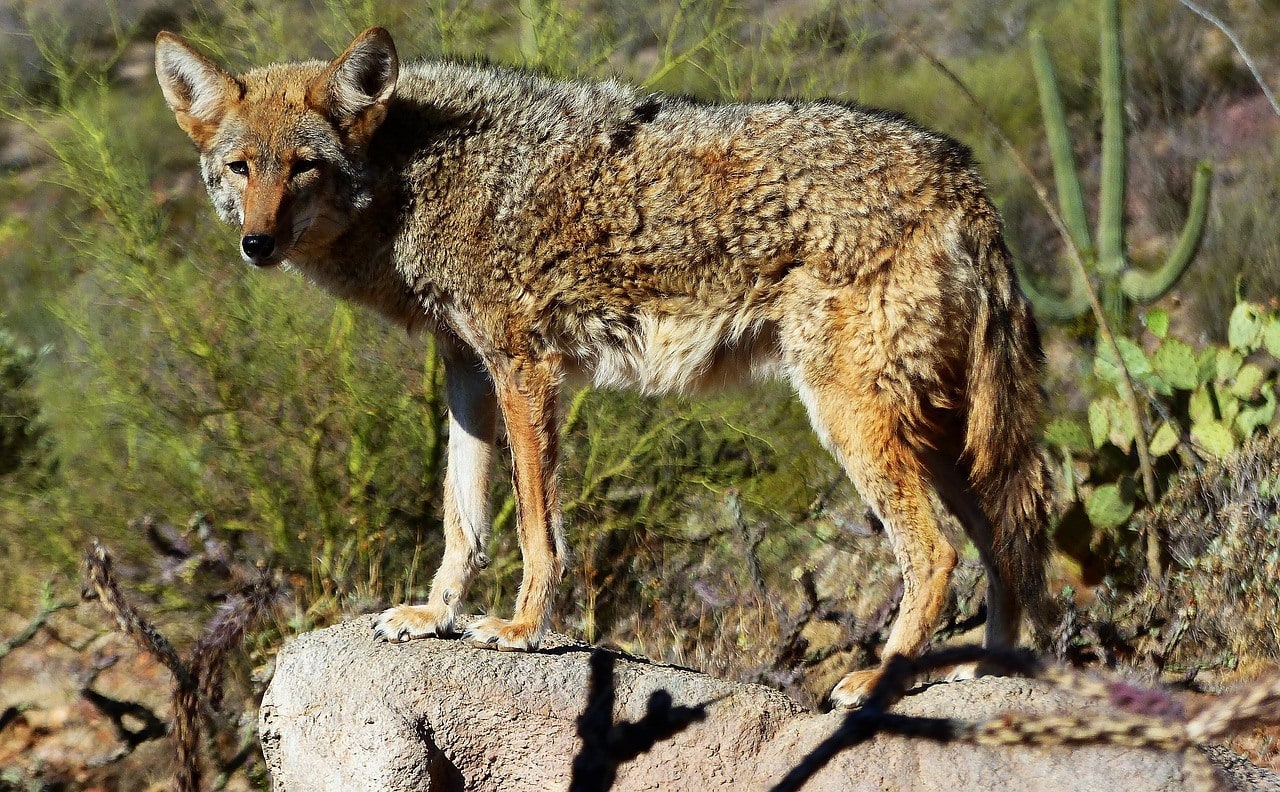
Coyotes in Your Yard
Coyotes can run at speeds of up to 35–43 miles per hour (or 56–69 kilometers per hour) and they have very good vision and a strong sense of smell. This combination makes them a formidable foe and, if that wasn’t enough, they sometimes hunt in pairs or even hunt cooperatively with other species, such as badgers. They are now considered among the top predators in the US and they will scavenge and hunt in rural areas.
- Related Read: Do Bobcats Attack and Eat Cats? What You Need To Know!
The Figures
According to a 2007 study by S.D. Gehrt, urban and suburban coyotes still rely on natural food sources, rather than depending heavily on human-generated food like garbage or domestic pets. Rabbits, rodents, the occasional deer, and some fruit were the primary food sources of these coyotes.
However, a separate study in Arizona by Grubbs and Krausman found that coyotes do sometimes prey on cats. In their research, they observed 45 coyote feeding events, and in 42% of those instances, the coyotes were seen consuming domestic cats.
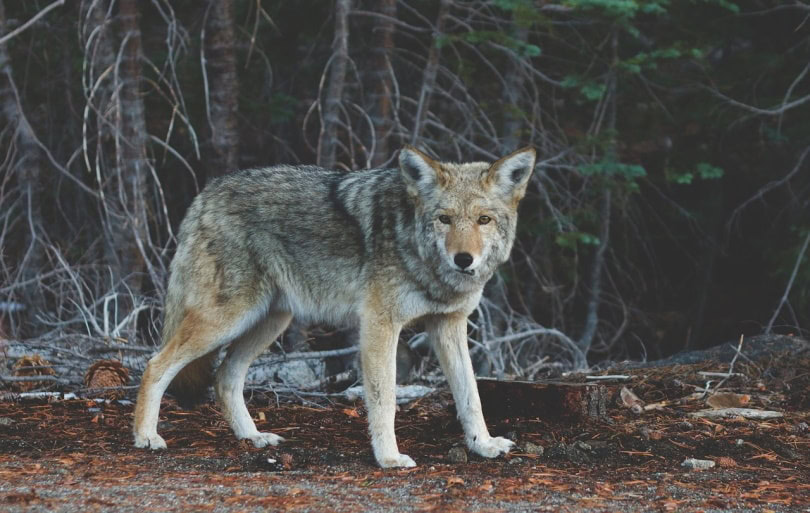
Keep Your Cat Indoors
Coyotes do present a danger to cats in certain parts of the country, although the exact level of threat is disputed. To keep your cat from harm, the safest measure to take is to keep them indoors. House cats that are well fed and properly looked after do not need to be let out.
Keeping your cat indoors not only protects them from coyotes and other predators, but also helps preserve local wildlife and reduces the risk of illness, injury from vehicles, fights with other animals, and even theft.

Protecting Your Ferals
For those that feed feral cats, keeping them indoors obviously isn’t an option, but some measures can be taken to help minimize the risk of fights and incidents.
- Have a Set Mealtime. If you feed ferals, consider giving them food once a day and keep it to a set time, during the day, when coyotes are less likely to be active in built-up areas. The ferals will quickly get used to the routine, and the coyotes are unlikely to attack during the day.
- Pick Up Leftover Food. It isn’t just the cats that attract animals like coyotes, it is the food that you leave out for them. Most animals will take the lazy option of eating food that is left out for them if given the choice, and coyotes are no different in this regard. Pick up any of the feral’s food that is left so that it won’t attract wild animals.
- Ensure a Safe Escape Route. If a coyote does attack, the cats need an escape route: a way to run that will enable them to get away from the coyote and to safety. Try to ensure that you don’t feed the cats in a corner because corners only have one way out. If that exit is cut off by an animal like a coyote, the cat has no options.
- Provide a Climbing Post. Cats are exceptional at climbing, and while coyotes can jump, run, and hunt, they aren’t great at climbing. Provide a vertical or near-vertical post that a cat can climb. Ensure that it leads a few feet off the floor and this should prevent the coyote from being able to follow.
- Discourage Any Coyotes You See. Coyotes are territorial and if they have a spot where they like to hunt, they will keep returning. If your garden is in this territory, your cat runs the real risk of being attacked. Discourage coyotes by chasing them off and using humane methods to get them away from the area.

Final Thoughts on Coyotes and Cats
Coyotes are opportunistic feeders that will adapt to their surroundings and the current availability of food. While they usually eat small animals like rodents, they will turn their attention to cats if there are any in the neighborhood. Keep your cat in or, if you are worried about ferals, ensure that they have routine and good escape routes.
Related Read:
Featured Image Credit: mathey, Pixabay
